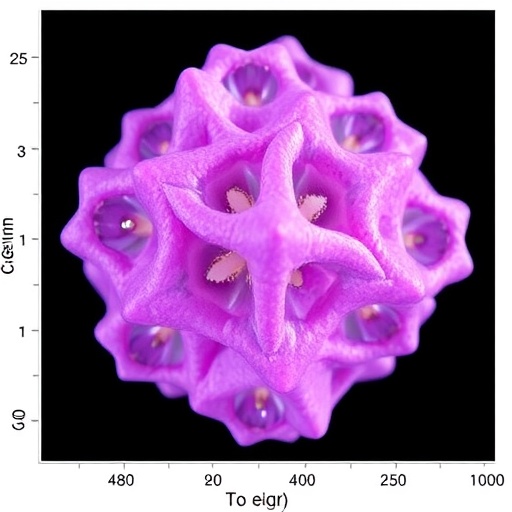In the quest for efficient and sustainable energy sources, the exploration of new materials has become a focal point for scientific inquiry. Among these materials, perovskite oxides have garnered significant attention due to their unique structural and electronic properties. A recent study sheds light on the specific redox behavior of cerium in the context of barium iron oxide, BaFe1−xCexO3−δ, which could have profound implications for various applications, including catalysis and solid oxide fuel cells. This research, conducted by Nikitin, Leonidov, Markov, and their colleagues, highlights the role that cerium plays in modulating the electronic environment of the perovskite structure.
The significance of cerium in this context cannot be overstated. Cerium, a rare earth element, is known for its exceptional reducibility and ability to toggle between oxidation states. By incorporating cerium into the barium iron oxide matrix, researchers aimed to investigate how it influences the overall redox behavior of the compound. In their pursuit, they employed various characterization techniques, including X-ray diffraction, spectroscopy, and electrochemical assessments. These methods collectively provided a multi-faceted view of the redox dynamics at play within the perovskite framework.
One of the intriguing findings of this study is the identification of distinct redox couples associated with cerium and iron in the mixed oxide matrix. This complex interplay has far-reaching consequences for the material’s conductivity and catalytic activity. The researchers observed that the introduction of cerium not only alters the electronic structure but also enhances the mobility of charge carriers. Such properties are essential for applications where efficient electron transport is crucial, such as in fuel cells and batteries.
In addition to enhanced conductivity, the incorporation of cerium into BaFe1−xCexO3−δ was shown to stabilize the perovskite structure, making it resistant to phase transformations that can occur under operational conditions. The stability of these materials is often a limiting factor in their performance, especially in high-temperature applications. By elucidating the role of cerium within the perovskite lattice, the study provides valuable insights into how to tailor these materials for specific applications in energy conversion and storage technologies.
Furthermore, the researchers explored the effect of varying the cerium content on the overall performance of the perovskite oxide. Their findings revealed that there exists an optimal concentration of cerium that maximizes the redox activity while maintaining structural integrity. This knowledge paves the way for the design of perovskite materials that can be custom-engineered for specific reactions and operating environments. The balance between redox capability and structural stability is critical for the next generation of energy materials.
The implications of this research extend beyond fundamental science. In the realm of energy technology, the performance of solid oxide fuel cells (SOFCs) and other electrochemical devices is heavily dependent on the properties of the electrode materials. The introduction of cerium into barium iron oxide may provide a pathway to improve the efficiency of SOFCs, which are known for their high energy conversion efficiencies but suffer from issues related to electrode stability and performance degradation.
Moreover, the understanding garnered from this study may also be applicable to catalysis, particularly in reactions where oxidation and reduction are coupled. The unique redox properties of cerium can be harnessed to develop catalytic materials that operate under milder conditions, thereby reducing energy consumption and improving reaction selectivity. This is particularly important in industrial processes where energy efficiency and environmental sustainability are becoming increasingly critical.
As the research advances, the potential for commercialization of these cerium-doped perovskite materials becomes more evident. The ability to produce highly efficient, stable, and tunable materials could position them as frontrunners in the race to develop next-generation energy solutions. Such advancements align well with global efforts to transition to more sustainable energy sources and technologies, responding to the call for low-carbon alternatives and reduction of greenhouse gas emissions.
Importantly, the study by Nikitin et al. underscores the significance of interdisciplinary collaboration in materials science. The integration of chemistry, physics, and engineering principles is essential for overcoming the multifaceted challenges associated with developing new materials. Future research endeavors will benefit from continued collaboration across disciplines, facilitating the discovery of innovative materials that could revolutionize energy technologies.
Post-publication, the scientific community will likely examine the implications of this research in greater depth, exploring related systems and further elucidating the mechanisms underlying cerium’s influence in perovskite structures. As the body of knowledge expands, it is expected that new avenues for research will emerge, potentially leading to breakthroughs that could transform energy conversion and storage technologies.
In conclusion, the specific redox behavior of cerium in BaFe1−xCexO3−δ perovskite oxides represents a promising frontier in material science. The intricate balance between redox activity and structural stability offers exciting opportunities for developing advanced materials that can drive the next wave of technological innovation in energy systems. As this research progresses, it holds the potential to unlock new pathways for achieving a sustainable and efficient energy future, a goal that is more important than ever in our current climate.
Subject of Research: The redox behavior of cerium in BaFe1−xCexO3−δ perovskite oxides.
Article Title: Specific redox behavior of cerium in BaFe1−xCexO3−δ perovskite oxides.
Article References:
Nikitin, S.S., Leonidov, I.A., Markov, A.A. et al. Specific redox behavior of cerium in BaFe1−xCexO3−δ perovskite oxides. Ionics (2025). https://doi.org/10.1007/s11581-025-06614-5
Image Credits: AI Generated
DOI: https://doi.org/10.1007/s11581-025-06614-5
Keywords: perovskite oxides, cerium, redox behavior, BaFe1−xCexO3−δ, conductivity, catalysis, energy conversion, solid oxide fuel cells.




